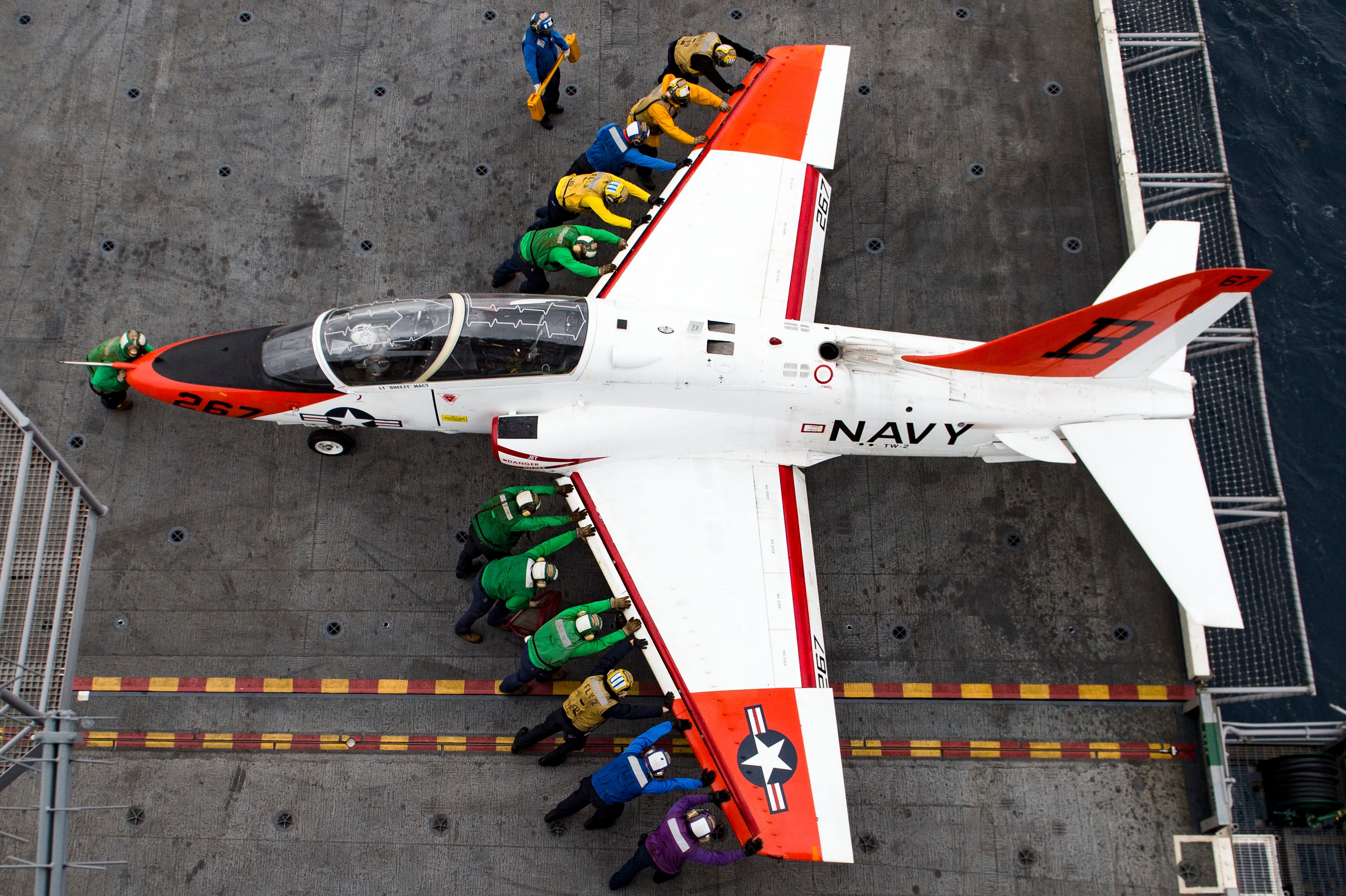The Navy resumed flight operations for part of its T-45C Goshawk jet trainer fleet Monday after a two-week grounding, but officials are declining to say how many of the aircraft are actually returning to the skies.
Flights for the Goshawks, which are used to train Navy and Marine Corps fighter pilots, were halted on Oct. 14 after an engine blade failure was discovered on one of the planes, according to Naval Air Systems Command, or NAVAIR.
In particular, one of the trainers suffered “a low-pressure compressor blade failure” before taking off Oct. 11.
“Engineering analysis has revealed that a subset of T-45C engine blades do not meet the manufacturer’s engine specifications,” NAVAIR said in a statement. “Those aircraft remain grounded.”
Navy officials declined to say Tuesday how many Goshawks remain grounded “due to operational security concerns,” according to an email from spokeswoman Elizabeth Fahrner.
RELATED

Fahrner also did not answer a question regarding the timeline for getting the entire fleet airworthy again.
“We will fly additional aircraft only once they are in compliance with these specifications and have been determined to be safe for our naval aircrews,” she said.
There are 193 Goshawks in the fleet overall, and jets found to not have the engine blade issue are returning to operations this week.
“The aircraft we are flying are verified and known-good,” Chief of Naval Air Training Rear Adm. Richard Brophy said in a statement. “We have the highest confidence in the compliance of these aircraft.”
Officials told Navy Times last week that no prior Goshawk mishaps have been attributed to this type of engine blade fault, although a mishap from August remains under investigation.
The Navy is working with manufacturer Rolls Royce to figure out the problem and a fix for it.
In the meantime, training units are filling the lack of flying time with simulators, classroom lectures and other computer-based training, according to NAVAIR.
“While the reintroduction of the T-45C fleet will be a staggered approach, it is not a process that will be rushed,” Brophy said. “It is essential that our maintenance partners analyze and diagnose this issue thoroughly so training operations can fully resume with the safety of each of our aviators as a top priority.”
Geoff is the managing editor of Military Times, but he still loves writing stories. He covered Iraq and Afghanistan extensively and was a reporter at the Chicago Tribune. He welcomes any and all kinds of tips at geoffz@militarytimes.com.




